Build-A-Rig Round 2, SilverStone vs Crucial: The $800 PC Build Logs
by Daniel Williams on November 4, 2015 2:00 PM EST- Posted in
- Build-A-Rig
- Crucial
- SilverStone
Building Crucial's Ballistix Bantam
| Crucial's Ballistix Bantam | |||
| Component | Selection | Price as Chosen |
90-Day Average |
| Processor (CPU) | Intel Core i3-4170 (2C/4T, 3.7 GHz) | $124.99 | $124.82 |
| Motherboard | GIGABYTE GA-B85N Phoenix-WiFi | $84.99 | $84.99 |
| Graphics Cards (GPU) | EVGA GeForce GTX 950 | $159.99 | $159.99 |
| Memory (DRAM) | Crucial Ballistix Tactical Tracer 2x4GB DDR3-1600 C8 |
$47.99 | $48.92 |
| Storage (SSD) | Crucial MX200 mSATA 250GB | $94.99 | $94.99 |
| Storage (HDD) | Seagate Barracuda 1TB 7200RPM | $50.99 | $49.81 |
| Power Supply (PSU) | Thermaltake TR2 600W | $54.99 | $55.05 |
| Chassis | Thermaltake Core V1 Extreme Cube | $49.99 | $49.99 |
| CPU Cooling | None | - | - |
| Operating System | Microsoft Windows 8.1 64-bit OEM | $99.99 | $99.99 |
| Extras | LG USB 2.0 Portable DVDRW | $24.99 | $24.99 |
| Total | $793.90 | $793.54 | |
Starting things off with the case, the ThermalTake Core V1 feels solid enough both assembled and with all the panels removed, I never felt like I was going to have a panel bend on me or that I had to be concerned about where I lifted the frame.
For the Thermaltake TR2 600W PSU install I laid the case on its face, pulled the cables through the bottom and then the side, and held the PSU in its final resting place while I screwed it in. I actually found this to be one of the easiest PSU installs I had ever done, lots of room and all the screw holes in the case left ample room to line up the mounting screws without struggle.
Installing the i3-4170 CPU and stock cooler were standard fare, though it is worth noting that the CPU fan header was well placed so that the HSF fan cable had a perfectly reasonable amount of slack. Looks to me like they did it on purpose, small props to Gigabyte there. On to the ram slots they only have a latch at one end but still lock on the other end. Meaning that while I would install RAM pressing the stick straight in as usual, when uninstalling the ram I have to pull from the latch end to get the stick out. Less work I guess but different than what I’m used to.
The motherboard just drops right in from the top and is screwed into standoffs that are formed into the sheet-metal. One small issue placing the motherboard into place was the rear I/O panel, there was a metal flap covering the gold plated USB 2.0 port hole that needed to be pushed out of the way as I moved the motherboard into place.
Front panel audio is routed away from the motherboard in an attempt to avoid EMI from motherboard getting into the front panel audio. The EVGA GeForce GTX 950 was easy to install in an open case like this. Just drop it in and screw it down, snapping the plastic screw cover back on after tightening down the card. Since the included Wi-Fi adapter was already installed I didn't need to do anything there and the Crucial MX200 mSATA SSD 250GB install was simple, just slip the drive into the mSATA slot and fasten one screw down.
Special care was taken behind HDD tray that made for much neater though not perfect cable runs. I first separated the 8-pin CPU power into just a 4-pin to limit clutter. I then ran all of the cables behind the tray, attempting to leave just enough to arc down to the slot, especially since the sleeving for the front panel fan both doesn't terminate in the connector and also kinks easily, so some arch was necessary to maintain a neat look. After the cabling was situated I fastened them all together with a four inch cable tie just out of sight behind the motherboard tray.
On the topic of cable management the wires coming out of the Thermaltake TR2 600W were a bit of a mess. What I saw when sorting out the various connectors was that a few of the connectors would have wires randomly threaded through a wire bunch from another connector. Causing the cabling to appear as a tangled mess at the base of the wires regardless of what I did. In the end I had to relegate the mess caused by this to the nest of wires left under the motherboard tray. Out of sight out of mind, I suppose?
After the cable management was settled in that corner of the case by the drive cages I was ready to install the Seagate Barracuda 1TB 7200RPM drive. I didn't find the HDD sleds here to be a great experience. It looks like they are supposed to wedge in between the motherboard tray and the bottom corner of the case, but being sheet metal I am left afraid of bending the trays as I remove or install them. Once out it took a little extra time for me to realize that I needed to slip the rubber mounts in first, then line the drive up and screw it in place. The instruction didn't clarify to this level of detail either. When I had the HDD tray situated and the cable management settled in I slipped the tray back in and fastened it with the single thumb screw. Space was quite tight here between the HDD and the CPU cooler, so anyone who with particularly large hands may need to use a screwdriver here to tighten the screw down.
All un-used cables and any extra slack were tucked and cable tied underneath the motherboard tray. one of the two bunches I tied was too big for the included four inch cable ties so I just chucked on one of my own twelve inch ties and called it good. What we are left with is actually something that I wouldn't be embarrassed to show through the top window of the case. And the lighting given off by both the ram and motherboard will both make the hardware in here easier to view.
Now that the builds are done they are both ready to duke it out and see who reigns supreme as a back to school machine.


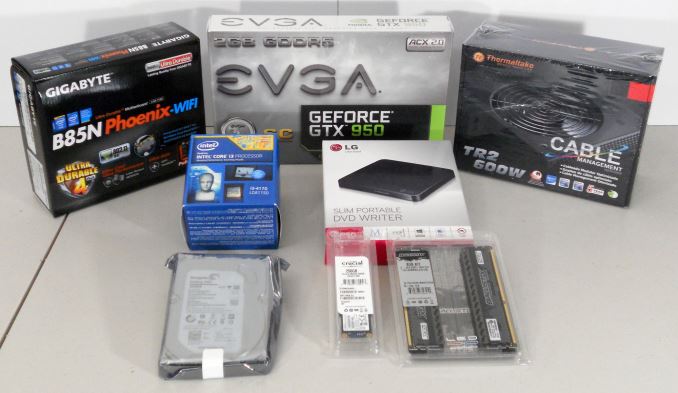
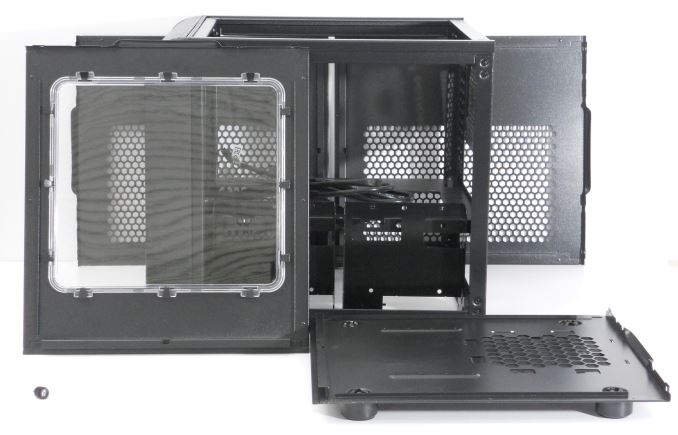
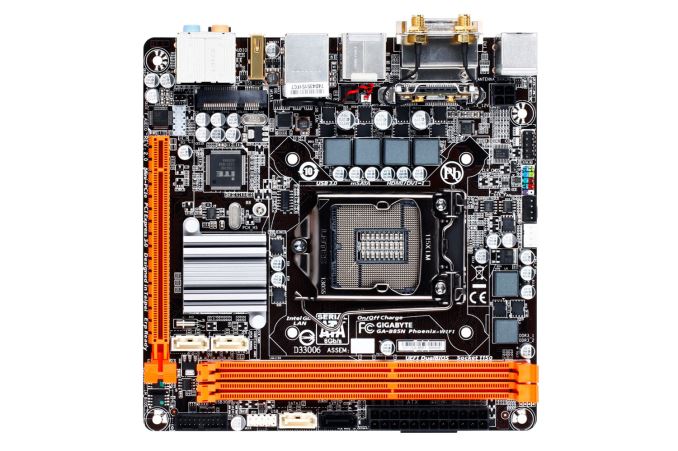
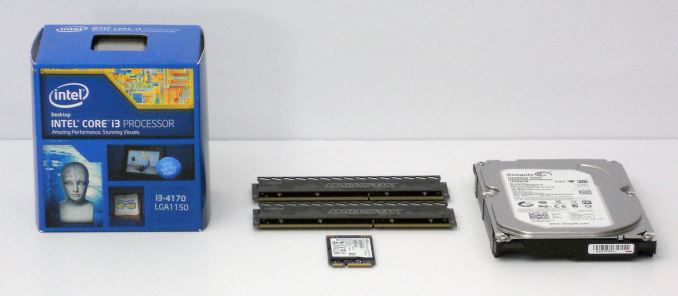
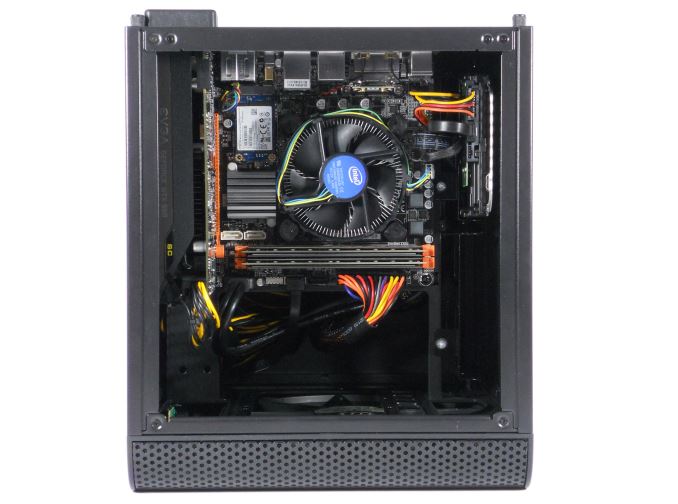
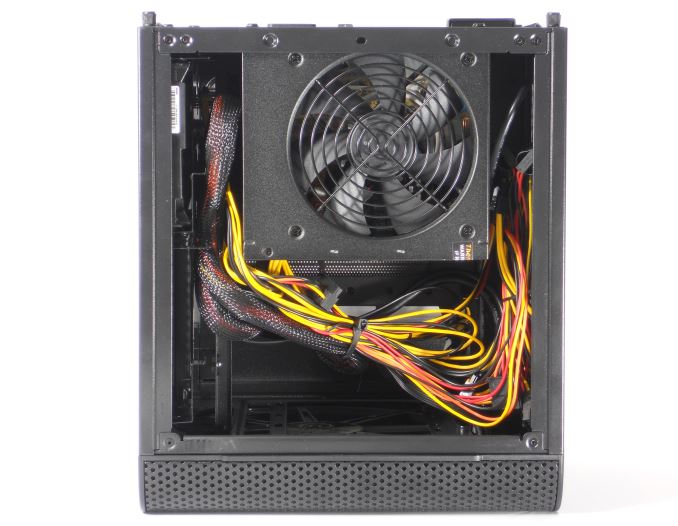
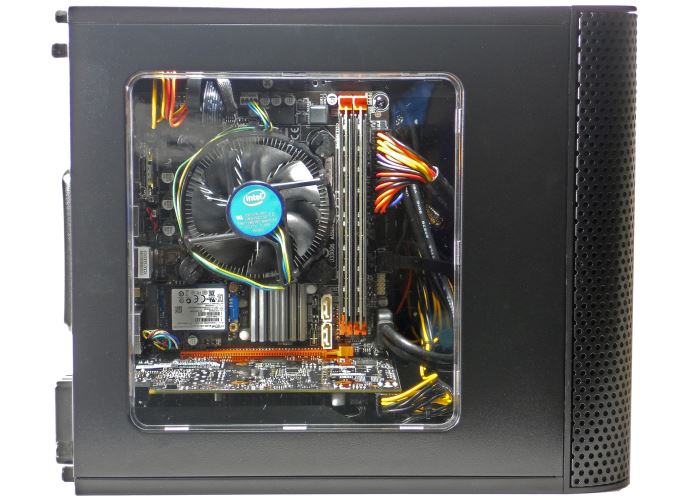








32 Comments
View All Comments
Samus - Thursday, November 5, 2015 - link
I'm wondering how you are going to install Windows 10 with the Pentium G3258. The bundled microcode update Microsoft pushed in June to Windows 7/8 is already built in to Windows 10, and this update borks Windows from booting on a Pentium G3258. You have to delete the microcode update DLL from the installation media just to get Windows 10 to install.meacupla - Thursday, November 5, 2015 - link
this, apparently, only happens on overclocked G3258, and especially if it's not using a Z chipset.Samus - Thursday, November 5, 2015 - link
It happened in a few B85 oem boards at the office. I even tested a chip in an HP Elitedesk 800 and same result.Overclocking and motherboard chipsets all have nothing to do with microcode. The flaw is in a register call to the second core. The ONLY was to run the microcode update is to disable the second core.
Daniel Williams - Thursday, November 5, 2015 - link
Oops, I arguably should have mentioned the Windows install process. But getting the G3258 running isn't difficult, but does require a couple extra steps. But you have the right idea Samus, disable one core, delete or rename the microcode update DLL, and re-enable the second core. Then it's off to the races like nothing ever happened.With that everything works out fine.
m0d0nne11 - Thursday, November 5, 2015 - link
I'm hoping that you'll please, Please, PLEASE offer some gorgeous systems like these but specifically intended to run Linux!Denithor - Thursday, November 5, 2015 - link
It's worth noting that the Silverstone build was $20 higher priced than the Crucial build - exactly the price difference between the 950 and 960 cards. The Crucial build, including the 960, would be much stronger for gaming and the better machine overall - at almost the exact same price point as the Silverstone rig.Mangosteen - Thursday, November 5, 2015 - link
You could've at least extended the giveaway to Canada and the UK sheeshCasecutter - Thursday, November 5, 2015 - link
Well as I find *no* reviews for that single fan EVGA 950, all we can go by are several Eggviews that do discuss the heat and noise aspects of the card. "Really pushes it hard and it gets extremely hot. I have their EVGA Precision software to control voltage and fan speed, it has to run the fan at 2000 and higher to keep it from hitting 80C and higher. I've gotten to stay around low 70's so far, but it does run pretty hot".... "Fan when under load kicks into high gear and is not very quiet, though I am not saying this thing is a jet engine either."... "Fan usually doesn't kick in until it needs to, this keeps the noise down when not under load."Sure the 380 has to dissipate ~25% more watts under load, but the PowerColor PCS+ has a very compact 3 heat-pipe lay-out for it's size, and the fans turn-off at ide also. I see two fans and heat pipe cooler doing better than I think what's a fairly smallish extrusion (or is that a stamping) very had to tell what's under there. Honestly, a single fan and whatever cooler is under there vs. a 3 pipe cooler and two fans, I might say there's either zero difference in noise, or the PCS+ might be quieter. If the EVGA was a rear exhaust I might say it had merit... But just because it supposed lower power, a single fan, and ITX size does it instantly mean it will run cooler or produce less noise.
If it about gaming that PCS+ is the hands down BfB, and I'd rather buy something I know what's under the hood.
isaac12345 - Thursday, November 5, 2015 - link
Giving up performance on both builds just to fit in a SSD is so darn silly. The first build can easily fit the other's CPU if it gives up the SSD. It can even include a 7200rpm drive instead of a 5400. The pentium is so not future proof as games already ask for 4 cores without hacks and overclocking it to get performance in such a small case will certainly pose problems.DanNeely - Thursday, November 5, 2015 - link
Buying a computer of any sort beyond an absolute cheapest piece of crap on the shelf in worstbuy race to the bottom failbox/failbook without an SSD is even sillier. A system that's crippled by only having a spinning HDD will inflict pain on the user all the time with brief random pauses due to the appallingly slow and high latency IO.